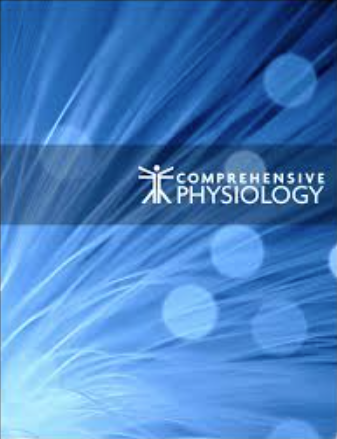求助PDF
{"title":"Cell Networks in Endocrine/Neuroendocrine Gland Function.","authors":"Nathalie C Guérineau, Pauline Campos, Paul R Le Tissier, David J Hodson, Patrice Mollard","doi":"10.1002/cphy.c210031","DOIUrl":null,"url":null,"abstract":"<p><p>Reproduction, growth, stress, and metabolism are determined by endocrine/neuroendocrine systems that regulate circulating hormone concentrations. All these systems generate rhythms and changes in hormone pulsatility observed in a variety of pathophysiological states. Thus, the output of endocrine/neuroendocrine systems must be regulated within a narrow window of effective hormone concentrations but must also maintain a capacity for plasticity to respond to changing physiological demands. Remarkably most endocrinologists still have a \"textbook\" view of endocrine gland organization which has emanated from 20<sup>th</sup> century histological studies on thin 2D tissue sections. However, 21<sup>st</sup> -century technological advances, including in-depth 3D imaging of specific cell types have vastly changed our knowledge. We now know that various levels of multicellular organization can be found across different glands, that organizational motifs can vary between species and can be modified to enhance or decrease hormonal release. This article focuses on how the organization of cells regulates hormone output using three endocrine/neuroendocrine glands that present different levels of organization and complexity: the adrenal medulla, with a single neuroendocrine cell type; the anterior pituitary, with multiple intermingled cell types; and the pancreas with multiple intermingled cell types organized into distinct functional units. We give an overview of recent methodologies that allow the study of the different components within endocrine systems, particularly their temporal and spatial relationships. We believe the emerging findings about network organization, and its impact on hormone secretion, are crucial to understanding how homeostatic regulation of endocrine axes is carried out within endocrine organs themselves. © 2022 American Physiological Society. Compr Physiol 12:3371-3415, 2022.</p>","PeriodicalId":10573,"journal":{"name":"Comprehensive Physiology","volume":"12 2","pages":"3371-3415"},"PeriodicalIF":5.2000,"publicationDate":"2022-03-29","publicationTypes":"Journal Article","fieldsOfStudy":null,"isOpenAccess":false,"openAccessPdf":"","citationCount":"0","resultStr":null,"platform":"Semanticscholar","paperid":null,"PeriodicalName":"Comprehensive Physiology","FirstCategoryId":"3","ListUrlMain":"https://doi.org/10.1002/cphy.c210031","RegionNum":2,"RegionCategory":"医学","ArticlePicture":[],"TitleCN":null,"AbstractTextCN":null,"PMCID":null,"EPubDate":"","PubModel":"","JCR":"Q1","JCRName":"PHYSIOLOGY","Score":null,"Total":0}
引用次数: 0
引用
批量引用
Abstract
Reproduction, growth, stress, and metabolism are determined by endocrine/neuroendocrine systems that regulate circulating hormone concentrations. All these systems generate rhythms and changes in hormone pulsatility observed in a variety of pathophysiological states. Thus, the output of endocrine/neuroendocrine systems must be regulated within a narrow window of effective hormone concentrations but must also maintain a capacity for plasticity to respond to changing physiological demands. Remarkably most endocrinologists still have a "textbook" view of endocrine gland organization which has emanated from 20th century histological studies on thin 2D tissue sections. However, 21st -century technological advances, including in-depth 3D imaging of specific cell types have vastly changed our knowledge. We now know that various levels of multicellular organization can be found across different glands, that organizational motifs can vary between species and can be modified to enhance or decrease hormonal release. This article focuses on how the organization of cells regulates hormone output using three endocrine/neuroendocrine glands that present different levels of organization and complexity: the adrenal medulla, with a single neuroendocrine cell type; the anterior pituitary, with multiple intermingled cell types; and the pancreas with multiple intermingled cell types organized into distinct functional units. We give an overview of recent methodologies that allow the study of the different components within endocrine systems, particularly their temporal and spatial relationships. We believe the emerging findings about network organization, and its impact on hormone secretion, are crucial to understanding how homeostatic regulation of endocrine axes is carried out within endocrine organs themselves. © 2022 American Physiological Society. Compr Physiol 12:3371-3415, 2022.
内分泌/神经内分泌腺功能中的细胞网络。
生殖、生长、应激和代谢是由调节循环激素浓度的内分泌/神经内分泌系统决定的。在各种病理生理状态下,所有这些系统都会产生节律和激素搏动的变化。因此,内分泌/神经内分泌系统的输出必须在一个狭窄的有效激素浓度窗口内调节,但也必须保持可塑性的能力,以应对不断变化的生理需求。值得注意的是,大多数内分泌学家仍然对内分泌腺组织持“教科书”式的观点,这种观点源于20世纪对薄二维组织切片的组织学研究。然而,21世纪的技术进步,包括特定细胞类型的深入3D成像,极大地改变了我们的知识。我们现在知道,在不同的腺体中可以发现不同水平的多细胞组织,不同物种的组织结构也不同,可以通过修改来增强或减少激素的释放。本文主要研究细胞组织如何通过三种不同组织和复杂程度的内分泌/神经内分泌腺来调节激素输出:肾上腺髓质,具有单一的神经内分泌细胞类型;垂体前叶,具有多种混杂的细胞类型;胰腺有多种混杂的细胞类型组成不同的功能单位。我们给出了最近的方法,允许研究内分泌系统内的不同组成部分,特别是它们的时间和空间关系的概述。我们相信关于网络组织及其对激素分泌的影响的新发现对于理解内分泌轴在内分泌器官内部如何进行稳态调节至关重要。©2022美国生理学会。中国生物医学工程学报(英文版),2016。
本文章由计算机程序翻译,如有差异,请以英文原文为准。


